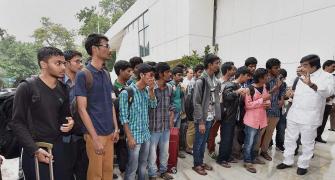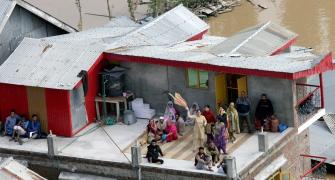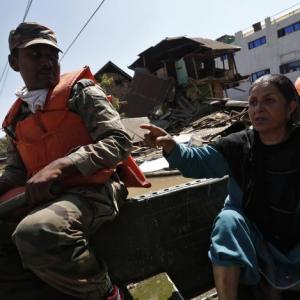“We are making serious attempts to rescue people marooned in flood waters based on inputs we get from various sources, including people,” asserted a top Indian Air Force official overseeing the marathon operations by his force amidst allegations by some people that forces had not reached all the affected people.
Air Vice Marshal Upkarjit Singh, Air Officer Commanding, said that the IAF has pressed into service a large number of assets, including heavylift aircraft C-17s, C-130Js, IL-76s and AN-32s, for the rescue and relief operations code-named ‘Operation Rahat-II’.
Besides facing the difficulty in reaching all the people, the IAF helicopters have also encountered problems of stone pelting in some areas while rescuing people and airdropping relief material. One helicopter was hit by a stone, prompting the force to change its strategy after which choppers maintained a safe distance from the ground.
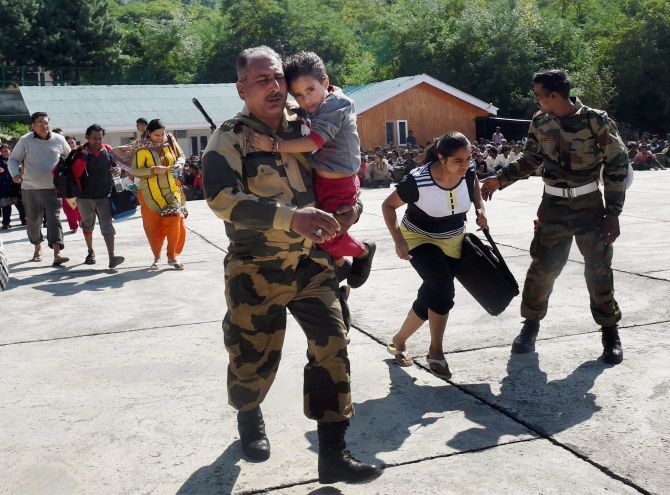
“We understand that people are angry. Even in a family, sometimes children get angry. But we are there to help out,” he said.
The IAF undertook rescue and relief operations in a massive scale in both Kashmir and Jammu regions since floods hit the two regions.
Complete coverage: The Jammu and Kashmir floods
Narrating the scene he saw in KashmirValley when he undertook an aerial recce soon after being tasked to carry out rescue operations, Singh said, “When we started operations on September 7, a very large percentage of the Valley was under water... KashmirValley was like an ocean. We could not distinguish between Jhelum, Dal lake and the inhabited areas. It was just one water body.”
He said there was a huge ‘handicap’ when the operations started as telecom network had broken down and “nobody could be contacted for local inputs”.
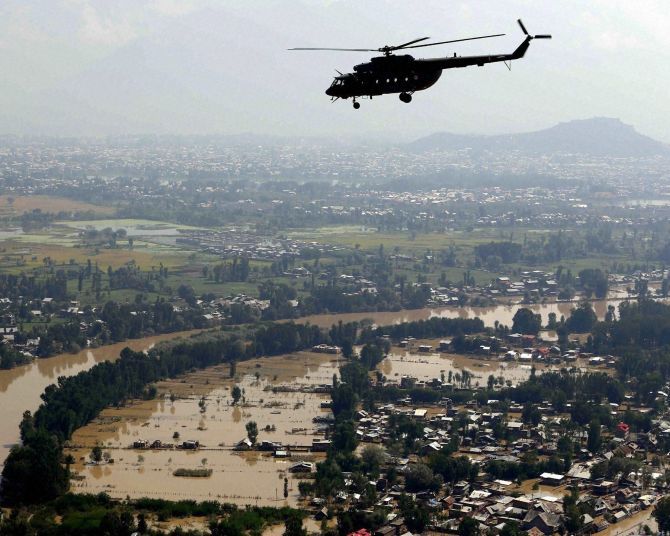
“So we depended on assessment based on aerial survey and whatever inputs we could get from individuals,” said Singh, who is based in Udhampur in Jammu region and flew into the Valley at one-hour notice to oversee the operations.
Initial emphasis was on rescuing people who were marooned in their houses which were submerged, some of them even up to two storeys. For this, commandos were used to pick up people from rooftops, balconies and even from windows. At least 1000 people were picked up in this manner.
The IAF also got into the immediate act of evacuating people from the Valley, particularly tourists who were stranded because of the floods. Scores of sorties were made by helicopters and aircraft for this purpose, he said.
“The prime minister had instructed us that the aircraft bringing relief material should take back tourists and others from Kashmir,” the official said.

Altogether 11,000 people were retrieved and 2000 tonnes of load was carried, he said.
On deployment of assets, he said about 70 aircraft and helicopters were pressed into service for rescue and relief operations. These included 3 C-17 aircraft, 5 C-130J aircraft, five IL-76 aircraft, 14 AN-32 aircraft and 15 Avro aircraft.
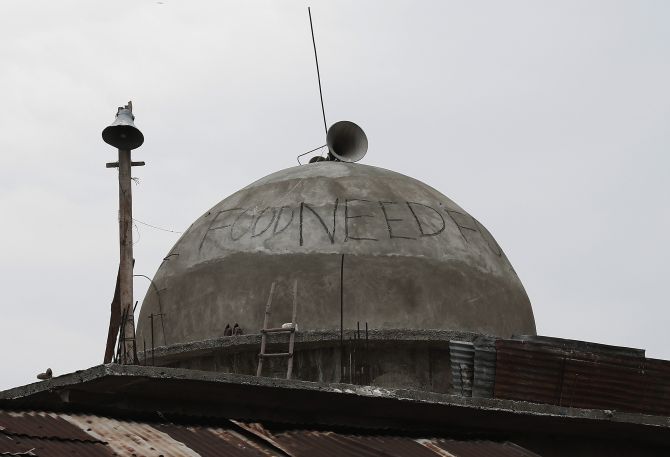
Slowly, the emphasis shifted to dropping of relief material like food and water. “We provided the most optimal solution to the situation,” he said when referred to allegations by some locals that the forces did not reach all the victims in time.
On demands for pressing more helicopters into service, the IAF official said this was not possible because of constraints of space required for their operations. Asked to compare the operations with that undertaken in Uttarakhand last year in the wake of floods there, Singh said the two operations cannot not be compared because of difference in topography.

